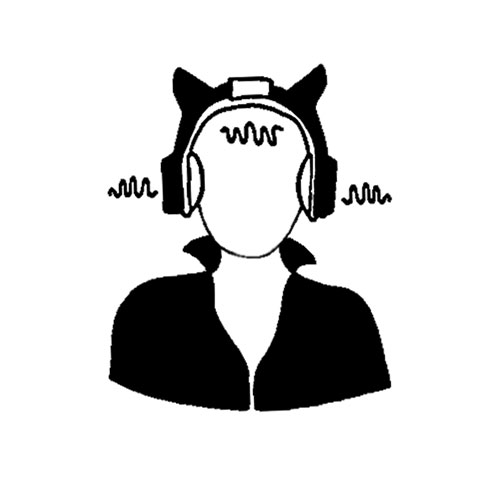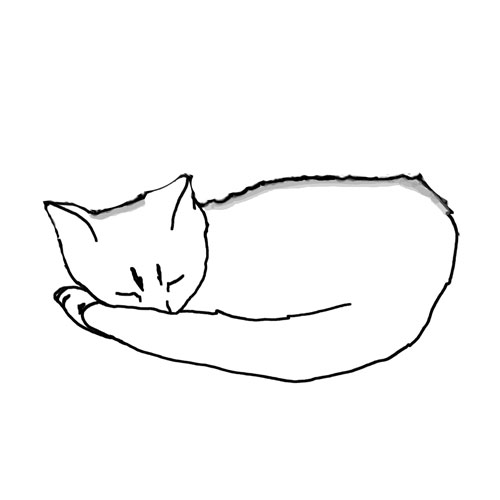Practices
You’ve surely passed through liminal dream space before. But you may not have thought of it as a destination. If you’ve ever been trying to stay awake and slipped into a hallucinatory swirl, or if you’ve simply noticed the kaleidoscopic half waking dreams you have as you’re falling asleep, you’ve experienced hypnagogia. If you wake up slowly enough, you’re probably also familiar with hypnopompia, a soft drift between thought and dream.
Everyone is a natural liminal dreamer. You already do it. You already know how. The beginning exercises, below, will help you figure out how to find hypnagogia and hypnopompia. Once you get the hang of finding those spaces, you can start playing with any of the other exercises.
The beginning exercises are always here to help people new to the practice. The other exercises change from time to time. You’ll find many other exercises, as well as background about traditions from they came, in my book.
Guided Liminal Dream Mediations/Yoga Nidras
Using a combination of yoga nidra methods and the exercises I’ve developed over the years, I’ve created some guided meditations designed to help you find the liminal dream space. Lie down, make yourself comfortable, and play one of these audio files. There are many ways to get yourself into liminal dream states. Listening to me guiding you there may be what works for you.
Meditations from My Monthly Dream Circle
I lead a free, open, monthly Dream Circle, usually on the 4th Friday of the month. Each circle focuses on a particular aspect of working with dreams. Every month, we experiment with an oneirogen and also with a specific practice. I close each dream circle with a yoga nidra meditation that also has to do with the month’s topic. Monthly Dream Circle is sponsored by the San Francisco Psychedelic Society. Though circle is free, you must register for each session through Dream Circle registration.
Scent as Oneirogen Nidra
During the December 2020 Oneironauticum Dream Circle, I led a yoga nidra meditation about using scent as an oneirogen. You can read more about olfactory oneirogens on my oneirogens page. For this meditation, choose a scent you can have near you when you sleep. Mugwort, rose, and lavender are all effective, but you can try any scent. After enjoying this meditation, keep your scent near you when you go to bed to experiment with how it affects you dreams. 21 minutes long:
Nidras from Other Events
When I speak about liminal dreaming (hypnagogia and hypnopompia) as part of an event or during my own classes and workshops, I usually include a yoga nidra guided meditation designed to lead people into hypnagogia. We all natuarlly experience liminal dreaming. A commmon reaction to the experience involves people telling me that they’re very familiar with the space, but never realized that the state of liminal dreaming was actually “a thing”, and not just a strange experience they had along the way as they fell asleep or woke up.
Jeweled Net of Indra Nidra
The idea of Indra’s Net comes from the incredibly rich, ornate Avataṃsaka Sūtra, also known as the Flower Ornament Sutra. Among the descriptions of astoundingly detailed, psychedelically interconnected, ever unfolding worlds included in this Buddist scripture is the idea of Indra’s net. Scholar Francis Cook describes it as “a wonderful net which has been hung by some cunning artificer in such a manner that it stretches out infinitely in all directions. In accordance with the extravagant tastes of deities, the artificer has hung a single glittering jewel in each “eye” of the net, and since the net itself is infinite in dimension, the jewels are infinite in number…If we now arbitrarily select one of these jewels for inspection and look closely at it, we will discover that in its polished surface there are reflected all the other jewels in the net, infinite in number. Not only that, but each of the jewels reflected in this one jewel is also reflecting all the other jewels, so that there is an infinite reflecting process occurring.” Given as a presentation for the SF Psychedelic Sangha. 20 minutes long:
The Power of Dreamland: a Mother’s Day Celebration
Sunday, May 10, I led a liminal dream yoga nidra as part of an event sponsored by the San Francisco Psychedelic Society. You can listen to that guided meditation here. 27 minutes long:
Yoga Nidra for Compassion
This nidra is about compassion and connectedness. In the midst of the fury, othering, and anger of the moment, it’s important to remember that we’re all connected. The anger is deserved; I don’t question that. How do we move forward? I feel it’s important to remember that share humanity: laughter, tears, the desire to be loved. We all sleep, and we all dream. This nidra was given as part of an event put on by We Are From Dust, a non-profit organization dedicated to bringing the transformative power of interactive art to public spaces. 19 minutes long:
Nidras from My Office
The three teachers who provided yoga nidra scripts for my book, Liminal Dreaming: Exploring Consciousness at the Edges of Sleep, also each included a forward for her nidra. In hers, Uma Dinsmore-Tuli explained that when someone leads a nidra by sinply reading a script written by someone else, that nidra usually lacks a presence and responsiveness. The following nidras are the first ones that I crafted myself.
Yoga Nidra for the Heart
This is my graduation nidra of sorts. I wrote it at the end of an intensive training week with Uma Dinsmore-Tuli, co founder of the Yoga Nidra Network. Meant to encourage the feeling of being at home in the heart. 13 minutes long:
Nidra for Linminal Dreaming
This nidra is specifically designed to help you find hypnagogic dream speace. 13 minutes long:
Beginning Liminal Dream Exercises
It’s easier to teach someone how to discover hypnagogia than hypnopompia. Hypnagogia happens as you fall asleep, which means you have way more opportunities to try it, since you can just lie down for a nap to give it a spin. Although you may have an easier time inhabiting hypnopompia—shout-out to all the late risers, like me, who can spend a long time in bed in the morning—you have to have been asleep for a while to get there. And some people very rarely even get into hypnopompic states. That probably includes all of you out there who jump out of bed in the morning, fully awake and ready to start your day.
You can try the following exercises at night when you normally go to bed. Keep in mind, though, that if you try these exercises as you drift off for a long sleep, you probably won’t remember much in the morning about your hypnagogic experiences. You’re likely to remember that it happened, but since you’ll have the experience and then fall asleep, it may remain hazy. That may suit you fine. It’s totally OK to have an experience just for the sake of having it in the moment. Don’t stress about whether or not you can recall it later, especially if you know you found it interesting as it happened. Once you try accessing liminal dream states more often, you’ll find you remember more of what happens there. If you fall asleep very quickly, or if you want to try to recall more, you should try these exercises before taking a nap. At the point in the day when your energy dips, lie down on the couch or a bed. If you find you just conk out immediately, try sitting up in a chair.

Feedback Loop (for hypnagogia)
Listen to Jennifer lead you through the Feedback Loop:
This exercise is about surfing the edge of consciousness, moving back and forth between thought and dream.
- Lie or sit back and relax your body and mind as much as possible.
- With your eyes closed, let your mind drift, but don’t fall asleep. You’re waiting for something: an image, an idea, a hazy memory, perhaps a distant sound. You might imagine it as much as see, hear, or feel it. Allow your waking, rational mind to loosen its hold on your experience. Open yourself to whatever arrives.
- Eventually, something will appear. It might just be a little visual glimmer, or a drifty thought. Maybe it’s a slight tone, or distant voices, or an unfamiliar emotion. Whatever it is, once it’s in your mind, breathe slowly and softly into it, allowing it to take shape, to move and shift on its own.
- Use your exhale to relax your body even further. As you breathe out, imagine you’re animating whatever it is that you’re perceiving, like watering a plant with your attention. The exhale removes tension and energy from your mind and body and transfers it to the hypnagogic dream that’s taking shape.
- If you start to fall fully asleep, sharpen your consciousness. The trick is to do it only slightly, so you don’t wake up completely. Try paying a little more attention to the act of paying attention.
- As you breathe your energy into the dream, hypnagogia will become easier to perceive. Especially at first, your hypnagogic dream may simply be moving points of light or color, faces turning toward you, or flashes of thought that shift into dream. The phenomena may also end quickly. But over time, this exercise will help you enter hypnagogia more easily, and stay there for long periods of time.

The Morning Linger (for hypnopompia)
To practice the Morning Linger, try to wake up as slowly as possible.
- When you first become conscious, as your mind comes back online from sleep, stay relaxed with your mind calm and unfocused.
- Keep your eyes closed and try to not move. Let your mind drift. You haven’t yet woken up all the way but your rational mind is starting to get into gear. This produces a hypnopompic dream space, where the boundaries that separate thought, imagination, and dream become extremely permeable.
- Lie in the midst of hypnopompia and experiment with shifting between thought and dream. With practice, you may find yourself able to spend more time in a mind space balanced between the two.
Accessing hypnopompia is also the best way I know to recall the REM dreams you’ve had during the night. As you sink back into an unconscious state, let your mind dwell on whatever images or thoughts arise. You may find that you begin to remember dreams from the night.
Forgotten dreams can also be unlocked by putting your body into the posture it was in when you had the dream. You probably sleep most often in the same three or four positions. (For example, I often lie curled on my left side with my left fist against my forehead.) If you don’t already know your sleeping positions, pay attention to how you naturally place yourself when you lie down, or how you’re posed when you awake. When you are attempting to remember any REM dreams, or if you’ve exhausted the store of what you can remember in one position, slowly move into one of your other positions and relax into it. Anyone who plays an instrument or has a physical practice like a sport or yoga or dance knows that the body has memory. Sleeping isn’t as far from that as you might think.

Other Exercises
Once you can find hypnagogia and hypnopompia, you can start experimenting. But please keep this in mind: you don’t need to do anything with your liminal dream practice. If you want to just lie back and enjoy this amazing experience of your mind, give yourself permission to do that. If you find joy delving into your own consciousness, I assure you that alone is good for you. Happiness is medicine. That said, you can use liminal dreaming for a wide variety of purposes.

Generating Ideas and Creativity
As a bridge between conscious and unconscious mind, liminal dreaming provides a unique opportunity for approaching creative, emotional, and even quite practical questions. To explore liminal dream space for creativity, try this exercise
The Dalí/Edison Method (for hypnagogia):
Many people have tapped into the creative potential of hypnagogia. Both Salvador Dalí, the surrealist artist from Spain, and the American inventor Thomas Edison conceived more or less the same exercise independently of each other. When feeling tired, each man would sit in a chair holding something in his hands. Edison held balls in both hands, whereas Dalí placed a solid brass Spanish key in one hand. Beneath them lay metal plates placed on the floor. Each would sit in the chair and start to drift off, until the balls or key dropped onto the plate and woke the holder. Edison kept a notepad nearby to write out ideas. Dalí kept a sketchpad. Here’s one way to adapt this practice, though you can find alternatives quite easily.
- Wait until you naturally feel sleepy. Thanks to chronotypes and circadian rhythms, most of us experience an energy dip in the afternoon. Just before bed is also good.
- Sit comfortably in a chair. If you’re at work, try this at your desk. You can also recline. If you really can’t nap, even lightly, sitting up, go ahead and lie down.
- Hold onto something that will clatter loudly when you drop it. You can try holding something over metal plates. You can also hold a bell, a handful of change, or a jingly dog toy. If you’re lying down, just raise your arm in the air.
- Keep something next to you to record your ideas. Pen and paper or a digital sketchpad work, as do voice-activated recorders. You can also just dictate into your phone, but set it up first so it’s ready immediately.
- Drift off into hypnagogia.
- Once you drop what you’re holding, or your arm drops, without doing anything else start capturing what’s in your mind.

Problem Solving and Healing
Marriage of the logical with the intuitive provides the foundation for many of the ways that people work with dreams, both today and traditionally. You might think that seeking healing and wisdom through dreams is a contemporary, “New Age” concept. But people have been practicing oneiromancy—a form of divination through dreams—and dream incubation—a method of seeking wisdom through dreams—in the service of healing for a very long time. The origins of Western medicine lie in the temples of Asclepius in ancient Greece, in which pilgrims used their dream states to receive prescriptions of sorts from their gods. It’s an old idea, but as a modern exercise it works quite well!
Dream Incubation (for hypnagogia and hypnopompia)
- Go to bed. Lie in one of your normal sleep positions and form a question, or just get a clear mental image of the issue you want to address—anything from a broken heart to broken computer code. Your question can be as simple as how to arrange the furniture or as complex as how to choose a life path. Meditate on it; let it seep into your body the way a sip of hot liquid warms your whole insides.
- Try to maintain awareness of your question through hypnagogia. Breathe slowly and deeply. Relax, but do your best to keep your question in your head right up until the moment you fall asleep. Like the many artists and thinkers who have used hypnagogia to get in touch with their creative juices, you may find that the hypnagogic dreams themselves already offer powerful insights.
- Next, literally sleep on it. That phrase exists for a reason. Let your unconscious mind churn whatever you’re cogitating. Your dreaming psyche approaches problems at a very deep level.
- In the morning, awaken as slowly as you can. Linger in the gentle, open, sweet space of hypnopompia. One part of this experience will involve thought. As you surface into consciousness, you’ll start to have ideas and memories. But the other part of your mind will loiter in dream. To try to recall more of the dream world, shift into your different sleep positions and drift off again. Your body memories will help concretize the intentions you set in hypnagogia as well as any dream revelations from REM.
- Keep something by your bed to capture whatever comes into your head. Maybe you like the Voice-Activated Recorder Method. Perhaps you prefer a notepad to write down thoughts, or a sketchpad to draw images. You can even just tell a friend. I do recommend doing something to capture any dream revelations you get. Sometimes it helps to come back to these records later, even if what you receive seems really clear at the time.
As with all practices, the more you do this, the better you’ll get at it. And again, patience and persistence pay off. Once you get in touch with your dreams, you’ll be amazed by the treasures they can offer.
